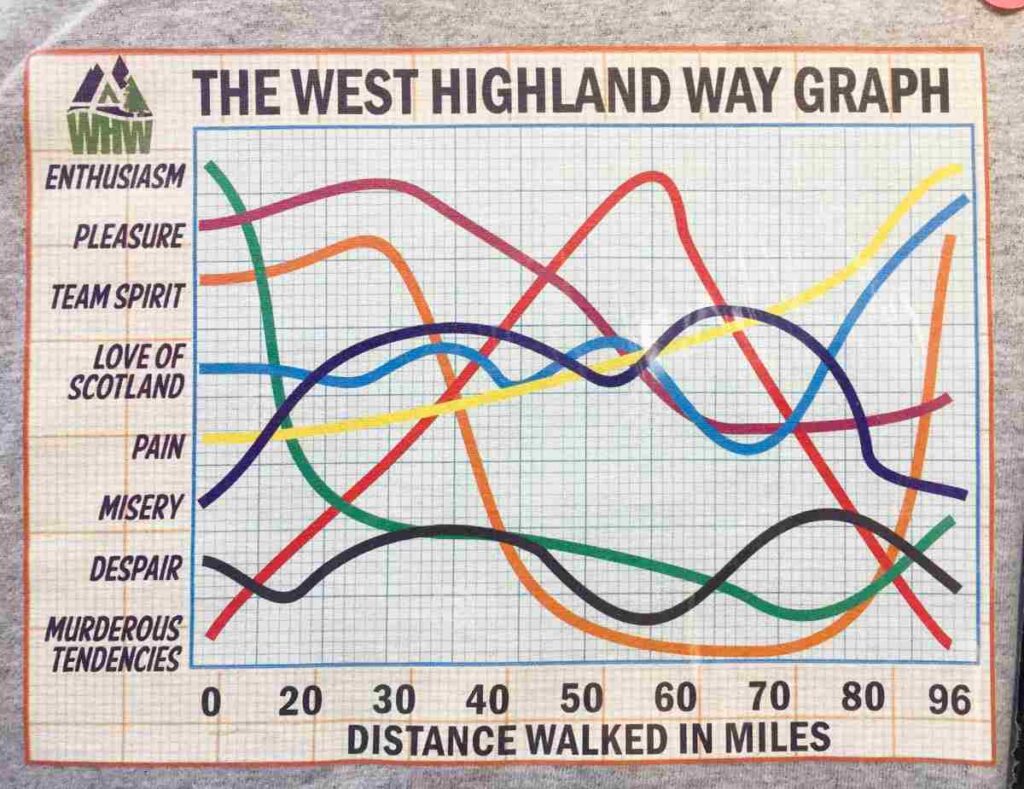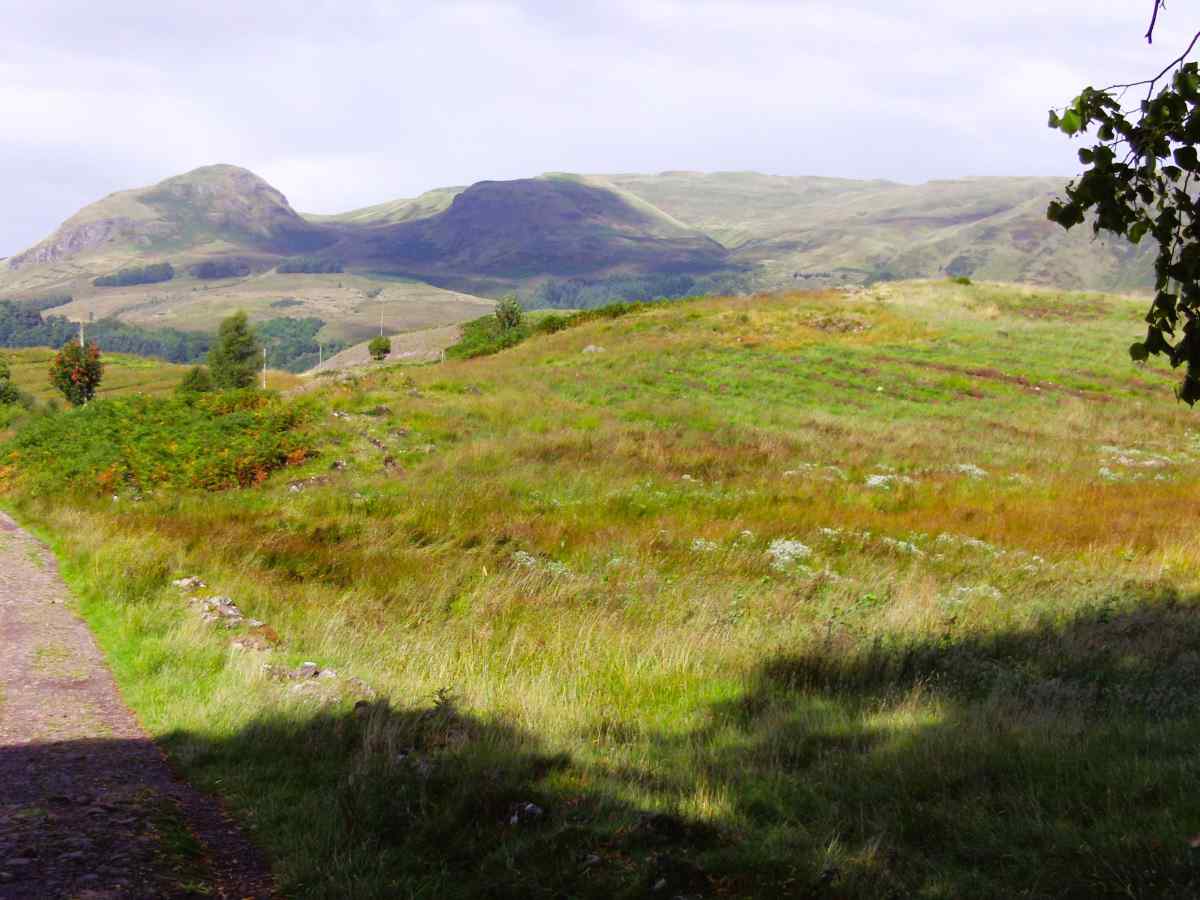In many ways, Scotland is culturally and geographically similar to the West of Ireland. While both regions are of course distinct, you do not feel completely out of place in the Scottish Highlands if you’re coming from Ireland. Scotland is famous for many things: bagpipes, whisky, haggis, castles, Loch Ness monster, tartan, kilts, deep-fried Mars bars, Edinburgh Fringe, Charles Rennie Mackintosh, a haven for outdoor enthusiasts (such as the iconic West Highland Way hike), etc.
Maybe you have mulled over what I think are the most important things to know about the West Highland Way prior to deciding to walk it. Maybe after the research you did on transport, pondering on your non-negotiables, your pace and the terrain of the walk, you decided this hike is for you. Well, congratulations, you’re in for a treat. Everyone is different but if you are now wondering how to plan and what to prepare next, here are a few tips on how I – a complete hiking novice – did it.

Accommodation On The West Highland Way
Accommodation was a critical aspect of planning my West Highland Way hike. The trail offers a range of options, from campsites to hostels and hotels. From experience, I would recommend booking your accommodation or camping spot in advance, especially during peak hiking season. You just want to have the peace of mind that you have a place to rest each night. Searching for one last minute after a full day of walking when the dusk is falling can be stressful. Some hikers opt for wild camping. In that case, it’s important to be aware of and adhere to the ‘Leave No Trace’ principles, respecting the environment and local regulations.
What I Did – Accommodation
Once I felt comfortable with the direction of the trail (from Milngavie to Fort William) and the average daily mileage (cca 12 miles), I looked to the guidebook and planned out our eight-day itinerary. Having a plan of where I was going to start and finish each day gave me a sense of security. My guidebook very helpfully included information on accommodation, shops and places to eat along the way.
I decided to bring a tent but I did not want to wild camp. I wanted to be able to have a shower each day, so I made sure my overnights were always in a serviced camp. Spoiler: This part of the trip did not go to plan, as you will find out later if you keep reading. I pre-booked tent spots for me and my hiking buddy Jane for the first two days. I had a hunch we should stay flexible in case something happened – a day with extremely bad weather, sprained ankle, something like that.
For the rest of the hike, I decided to rely on camping being available at the end of each day when we reached our destination. In hindsight, I would not really recommend this approach. Finding accommodation proved stressful a couple of times. I completely underestimated how popular the West Highland Way is!
Weather and West Highland Way Midges
Do not underestimate either. Be prepared for rain. I cannot stress that enough. No point beating about the bush – it will rain on your West Highland Way hike, more than once. A good rain jacket with a hood, waterproof trousers and boots are a must.
Also, we must mention highland midges. Tiny, tiny flies, much smaller than mosquitoes, they come out in their millions and cover every surface in sight. You cannot bat them away and you cannot swipe them off either – you squish them if you to do that, yuck! Midges can appear any time between April and September. They love the rainfall and warm weather combo and they are unreal! You have been warned.
What I Did – Weather And Midges
I only had a light water-resistant (not waterproof, big mistake) windbreaker that I put over my fleece top in the rain. It was fine most of the times but once we got absolutely drenched. Eventually the buckets of rain seeped all the way through to my skin, followed by the cold and that was not pleasant. We were really lucky that evening to find a lovely warm B&B with the last remaining room available. We were able to dry our clothes and boots in the common drying room and have a hot shower. The hiking god was looking after us that day.
I also had very light but properly waterproof trousers that I just pulled over my walking trousers in the rain. They were a lifesaver, never got soaked through and kept me dry. I was also very grateful for my boots, which I bought new and broke in on a few walks before setting off for Scotland.
In terms of the midges, both my friend and I packed repellents and midges hats. The repellents did not really work, they stank, made my skin super dry and made very little difference to the midges. Our midges hats, on the other hand, were more successful. They made us look like beekeepers, a bit silly, but they kept the midges off our faces! Luckily, we only had one day when the little beggers came out in force. The hike would’ve been miserable if we had to endure them every day.
How To Plan What To Pack In Your Backpack
Packing wisely is key to a successful hike. Consider the weather conditions at the time of your walk, your non-negotiables and pack accordingly. Waterproof gear is a must any time of the year, sturdy hiking boots and layered clothing. Lightweight camping equipment may be necessary if you choose to camp along the trail. A good-quality backpack with proper weight distribution is crucial for carrying your essentials comfortably. Make sure you have room for enough food and water for each day, as some sections of the West Highland Way may not have readily available facilities.
What I Carried In My Backpack

I had a lovely hiking backpack that I borrowed from a friend. It was just right, not too big and not too small. Fully packed it weighed around 12kg, which is not bad. Jane’s was much bigger and much heavier. But she was carrying a bigger tent than me and also lots more hiking paraphernalia.
After two days of walking, the weight ‘settled’ on my back and carrying it was no longer a chore. This is what I had packed:
- Bottom pocket: tent, poles, travel pillow.
- Main bag: flip flops (getting out of my hiking boots in the evenings felt great), underwear, socks, sleeping bag, trousers (1x waterproof, 1x leggings, 1x shorts), t-shirts (x5, one for every two days plus a clean one for travel day back), water resistant windbreaker, headband and scarf, shaker bottle, energy bars.
- Left pocket: sitting pad (could have done without), sanitising wipes, hand sanitiser.
- Right pocket: headlamp, torch, spare batteries, bungee cords.
- Top pocket: first aid, Vaseline, repellent, midges hat, towel, essential toiletries.
- Plus walking poles. I also borrowed these from my hiker friend and found them really handy to help with balance in difficult terrain. I felt they made walking generally easier.
Plan For Meals And Groceries Restock
When I was mapping out the route of our hiking days, I made sure we would come across a shop every day to buy water, food and snacks. Having at least one warm meal a day, was one of my non-negotiables. I knew I would need energy to walk the daily distances. I made sure we stopped at a pub, café or a restaurant every day on the hike.
Should I Train for The West Highland Way Hike?
I did not train in any special way. I just kept doing my daily walks. The trail does involve varying terrain, including some steep ascents and descents. So, if you are really inactive, building endurance and strength beforehand may enhance your hiking experience. Regular cardiovascular exercise, such as walking, jogging or cycling, can help prepare you for the demands of the trail.
After All The Planning, Lace Up Your Boots And Get Onto The West Highland Way
In conclusion, planning a hike along the West Highland Way involves a sensible approach. You should have an idea of the trail route, transport options, accommodation, weather, packing and logistics. Try and allow for some flexibility in case of any unforeseen circumstances arise. With a good plan, you will be able to fully immerse yourself in the breathtaking beauty of the Scottish Highlands and create lasting memories along this iconic long-distance trail.

